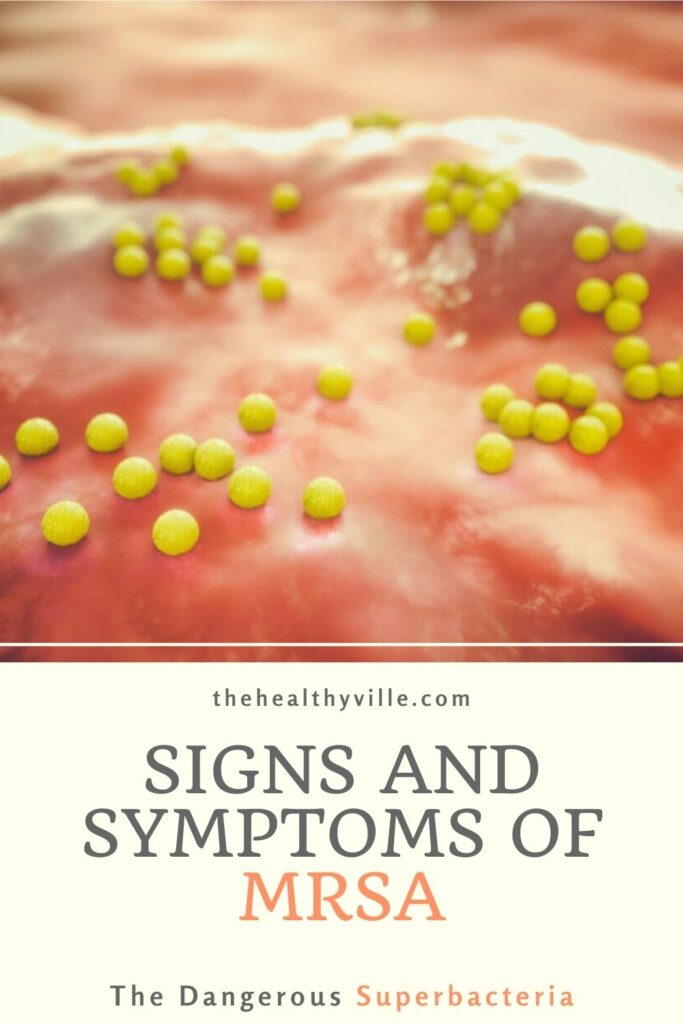Signs and symptoms of MRSA infection usually occur in long-term hospital patients and in people who use intravenous drugs. Learn more about it.
MRSA infection refers to a condition caused by the microorganism methicillin-resistant Staphylococcus aureus (MRSA), a strain of this bacterium that has become resistant to several antibiotics. As the Mayo Clinic indicates, approximately 2% of the world’s population has this chronic condition.
Although when in a healthy individual does not usually report serious problems, when this pathogen enters deep wounds, intravenous catheters and other instruments, the picture can be fatal. If you want to know everything about these resistant superorganisms and what they do in humans, read on.
What is MRSA?
As we have said, the acronym MRSA refers to Staphylococcus aureus resistant to methicillin, although the microorganism also has resistance to penicillin. These types of bacteria are in people’s upper respiratory tract and on the skin surface without this being a problem.
On the other hand, when the pathogen enters the body intravenously or through a wound – especially in immunosuppressed people – the issue can get very ugly. In the United States, for example, 20% of S. aureus infections in intravenous drug users are reported to be MRSA.
Who is at risk?
According to the MSD Manual, some staph infections are more likely in certain situations. Among them we find the following:
Patients requiring actions on the bloodstream: When an intravenous line is placed for a long time in an immunosuppressed patient in a hospital setting, the chances of MRSA infection increase.
Factors that promote endocarditis: a catheter in the blood vessels, an artificial heart valve, or the use of intravenous drugs can cause bacteria to settle in the endocardium.
Patients with pressure or diabetes ulcers: These people are at higher risk of ulcer bacteria progressing into bone tissue, causing osteomyelitis.
Hospitalized: According to sources already cited, the majority of deaths from MRSA occur in hospital settings. Increased presence of bacteria and immunosuppression can be a lethal combination.
As a summary, we can affirm that those who have operations or complicated processes in hospitals are at risk, as well as those who consume drugs intravenously.
What are the signs and symptoms of MRSA?
As indicated by the United States National Library of Medicine, MRSA infections often appear in admitted patients who already have a weakened immune system. The cutaneous variant manifests as a red, swollen, and painful area on the skin. This indicates that the initial bacterial proliferation goes to the epidermis.
On the other hand, infections in immunosuppressed patients usually present systemically (beyond the wound) and tend to be severe. Depending on affected organs, the most common clinical signs are the following:
- Chest pain, cough, and shortness of breath.
- Fatigue, fever, and chills.
- General indisposition and headache.
- Skin rash and wounds that do not heal.
How to diagnose it?
As indicated by the Kidshealth portal, the diagnosis is based on patient samples. Smears can be taken from the initial lesion, but should also be accompanied by blood tests and other methods to corroborate the extent of the infection.
Sputum and urine samples can be collected and sent to a laboratory that will isolate the pathogen using bacterial cultures. When the bacteria are present in samples from the lungs or blood, treatment is complicated.
Possible treatments for a MRSA infection
According to the Centers for Disease Control and Prevention (CDC), a skin MRSA infection may require drainage of the wound and, in some cases, the prescription of antibiotics to which the microorganism is not resistant. In no case should you treat this pathology in the home environment.
Serious diseases spread throughout the body require an emergency hospital admission. These patients usually require initial intravenous therapy, followed by antibiotics for a variable time. Unfortunately, the prognosis is uncertain.
Prevention of MRSA infection
As indicated by the Radys Children portal, avoiding a MRSA infection is simple if you follow a series of steps. Among them we highlight the following:
- Wash your hands effectively for 20 seconds regularly. In areas with large concentrations and crowds of people this is essential.
- Sanitize any wound as soon as it occurs. The patient should wear bandages or gauze on the lesions, so that pathogens cannot enter.
- Don’t share your personal hygiene tools with others.
- Do not inject illicit drugs.
- Wound healing to avoid MRSA infection.
- Healing wounds is key to avoiding MRSA infection. Doctors must prevent the bacteria from entering the bloodstream.
An increasingly common pathology
MRSA infection has been associated with hospital environments and certain life practices, but the reality is that they are becoming more and more common due to the spread of resistant pathogens in society. Although not always fatal, it can be quite disturbing.
Therefore, it is essential to take as a habit to wash your hands regularly and to sanitize all wounds and abrasions, however insignificant they may seem. Preventing this disease is simple, as long as doctors maintain basic habits in the environment.
Don’t forget to SHARE the signs and symptoms of MRSA with your friends and family on your social networks!

